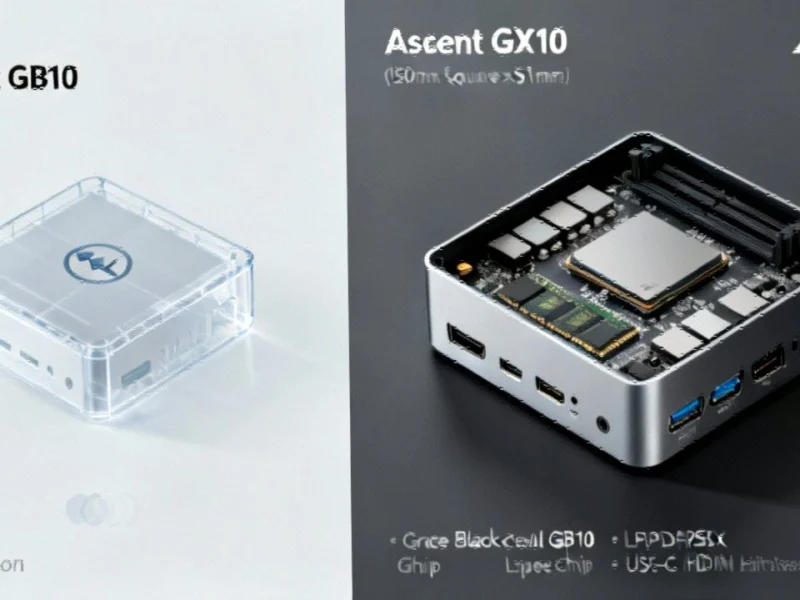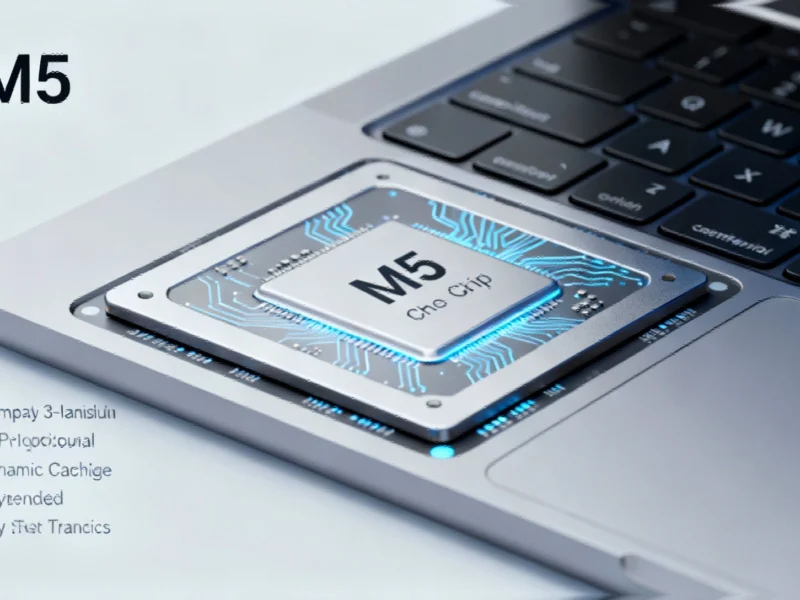Note: Featured image is for illustrative purposes only and does not represent any specific product, service, or entity mentioned in this article.
Market Dynamics Shift in AI Desktop Space
The competition for next-generation AI workstations has taken an interesting turn as Asus begins shipping its Ascent GX10 system while Dell’s competing offering remains conspicuously absent from the market. This development creates an unexpected opportunity for Asus to capture early adopters in the rapidly evolving AI hardware space, particularly among researchers and developers seeking immediate access to cutting-edge technology.
Availability Divide Creates Buying Opportunity
While Dell’s Pro Max GB10 system shows only a “notify me when available” status with no projected shipping date, Asus has partnered with retailer Viperatech to offer immediate ordering with promised shipment within ten days. The $4,100 price point positions the Asus GX10 as an accessible entry into the Blackwell architecture ecosystem, potentially drawing customers who might otherwise have waited for Dell’s offering. This availability gap represents a significant strategic advantage for Asus in capturing early market share.
Technical Specifications Redefine Desktop AI
Both systems center around Nvidia’s groundbreaking Grace Blackwell GB10 Superchip, which represents a fundamental shift in computing architecture. The chip merges CPU and GPU resources into a unified package capable of delivering up to one petaflop of FP4 computing performance – a level previously confined to data center installations. This performance breakthrough aligns with broader industry developments in high-performance computing infrastructure.
The integrated system comes equipped with 128GB of LPDDR5x unified memory and supports AI models with up to 200 billion parameters, effectively bringing server-class capabilities to desktop form factors. The ARM v9.2-A CPU paired with Nvidia’s integrated Blackwell GPU creates a balanced architecture optimized for AI workloads while maintaining energy efficiency.
Compact Design, Maximum Performance
Despite its formidable capabilities, the Asus GX10 maintains remarkably compact dimensions at just 150mm square and 51mm tall, weighing only 1.48kg. This miniature powerhouse incorporates advanced thermal management systems to maintain optimal performance under sustained heavy loads, addressing one of the critical challenges in high-density computing. The system’s physical design represents significant related innovations in manufacturing and component integration.
Expansion and Connectivity Features
The GX10 doesn’t compromise on connectivity despite its small footprint. It features:
- Wi-Fi 7 and Bluetooth 5 for wireless connectivity
- 10G Ethernet for high-speed networking
- Multiple USB 3.2 Gen 2×2 Type-C ports with one supporting 180W power delivery
- HDMI 2.1 for external display support
Perhaps most significantly, the system supports dual-system stacking through Nvidia’s ConnectX-7 networking and NVLink-C2C interface, enabling local compute expansion that mirrors approaches seen in broader market trends toward scalable AI infrastructure.
Storage and Workload Capabilities
Storage options range from 1TB PCIe 4.0 NVMe SSDs to 4TB PCIe 5.0 drives, providing ample space for large datasets and project files. This flexibility ensures the system can handle the substantial storage requirements of modern AI development workflows, from training data management to model versioning. The availability of these systems marks an important milestone in the broader emergence of Blackwell AI workstations across multiple manufacturers.
Market Implications and Future Outlook
The current situation creates a fascinating dynamic in the professional workstation market. Asus’s early shipping advantage could pressure Dell to accelerate its timeline, while also potentially influencing pricing strategies across the segment. With Acer and other manufacturers expected to enter the market with similar systems, the competition for AI workstation dominance is intensifying rapidly.
For developers and researchers, the immediate availability of Blackwell-based systems represents a significant acceleration in accessible AI computing power. The ability to run models with up to 200 billion parameters on a desktop system fundamentally changes development workflows and experimentation capabilities, potentially accelerating innovation across multiple AI domains.
This article aggregates information from publicly available sources. All trademarks and copyrights belong to their respective owners.



